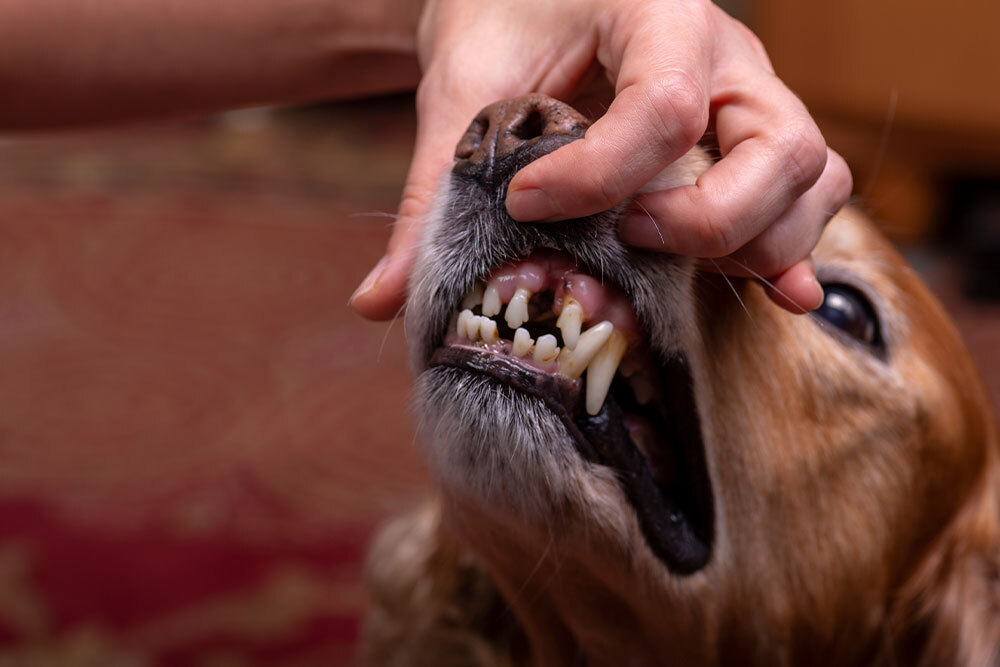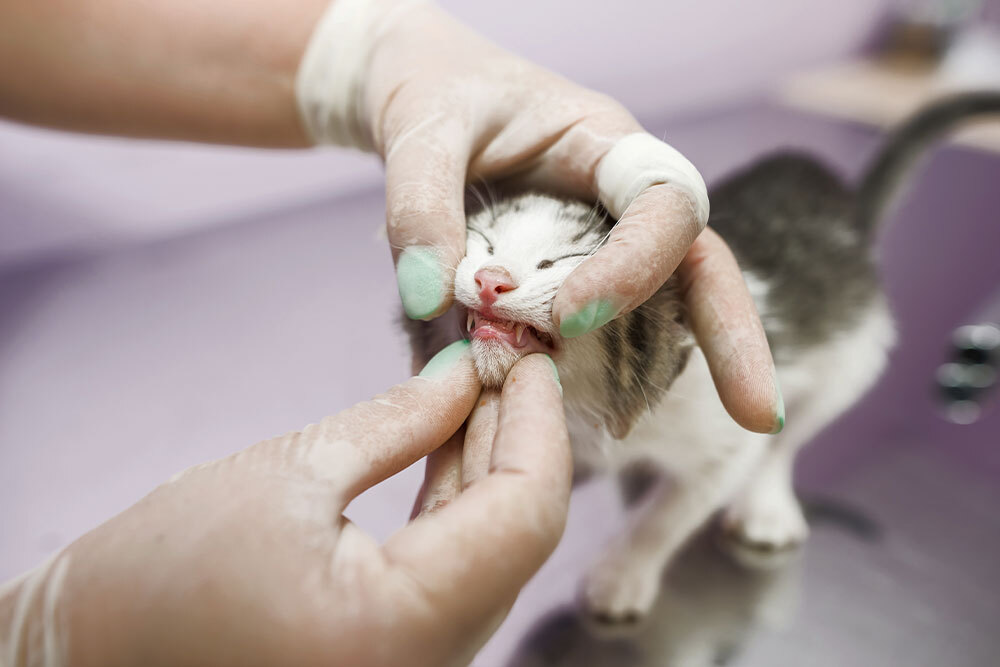We talk with pet owners every single day at Heartland Veterinary Hospital in Danville, Kentucky, and almost everyone asks the same question: “Is there a safe way to clean my pet’s teeth without anesthesia?” We understand the appeal of so-called “anesthesia-free” or non-anesthetic dentals (NADs). They sound convenient, inexpensive, and—on the surface—safer. Yet when we weigh what really happens inside the mouth, NADs can leave disease untouched, create new problems, and delay the treatment your pet truly needs. Below, we share why our medical team recommends a complete professional dental cleaning under anesthesia, how untreated oral disease progresses, what emergencies look like, and how you can protect your pet’s smile at home.
Why NADs Became Popular (and Why Popularity Isn’t Proof of Safety)
Marketing around NADs often highlights three points:
- Lower up-front cost
- No perceived anesthesia risk
- A faster appointment that lets you zip in and out
While those factors are attractive, they ignore what we see beneath the gumline every day. Roughly 60–80 % of dogs and cats over age three have some form of periodontal disease according to the Pet Dental Care – AVMA. Most of that disease hides where a scaler can’t reach unless the patient is asleep, relaxed, and pain-free.
The Medical Gaps in an Anesthesia-Free Cleaning
- No subgingival access – Plaque and tartar below the gumline harden into calculus, spark inflammation, and dissolve bone. Scraping only the visible crown is like washing the top half of a dirty dish.
- No dental X-rays – We detect root abscesses, resorptive lesions, and early oral tumors of small animals only with imaging. Without films, disease festers silently.
- Roughened enamel – Hand scaling without polishing leaves micro-scratches that encourage faster plaque return.
- Patient movement – Even the calmest pet can jerk when a sharp instrument touches a sore spot. A sudden move risks gum lacerations or even jaw fracture.
- Stress and fear – Anxious restraint can cause lasting aversion to future veterinary visits and erodes trust between your pet and the clinical team.
Why Anesthesia Is Safer Than It Sounds
Modern protocols rely on pre-anesthetic bloodwork, individualized drug choices, IV fluids, and continuous monitoring. Guidelines such as Anesthesia and Dental Cleaning for Pets – AAHA outline standards we follow every day. When we have control of the airway, pain, and movement, we can:
- Perform full-mouth probing and charting
- Obtain intra-oral X-rays (vital for >70 % of diagnoses)
- Remove diseased teeth before they cause chronic pain
- Polish enamel to a smooth finish
- Apply fluoride or sealants to slow plaque buildup
Your pet sleeps comfortably, wakes up with minimal discomfort, and goes home the same day with a truly clean mouth.
What Happens If Periodontal Disease Hides Below the Gumline?
Periodontal disease is not an overnight event; it unfolds in stages.
- Stage 1 – Gingivitis: Red gums and bad breath. Often missed.
- Stage 2 – Early periodontitis: Pockets form; mild bone loss begins.
- Stage 3 – Established periodontitis: Tooth mobility, oral pain, decreased appetite.
- Stage 4 – Advanced periodontitis: Severe bone loss and infection that can seed bacteria to the heart, liver, and kidneys.
Small-breed dogs are especially vulnerable. The Guide to Dental Disease in Small Breed Dogs – Royal Canin explains how their narrow jaws crowd teeth and trap debris. Toy breeds may also retain baby teeth; ignoring them can lead to root crowding (see Deciduous Canine Tooth Removal in Dogs – Today’s Veterinary Practice) and painful malocclusions discussed in the ABCs of Veterinary Dentistry: Malposition and Malocclusion – DVM360.
Each condition carries its own management challenges, costs, and impact on quality of life.
Recognizing a Dental Emergency
While chronic dental disease creeps along, certain red flags mean you should call us immediately:
- Sudden facial swelling or a draining wound below the eye
- Reluctance to open the mouth, drop toys, or chew on one side
- Uncontrolled bleeding in the mouth
- A wobbly tooth hanging by gum tissue
- Jaw fracture (more common in tiny breeds; see Trouble with Toy Teeth – AKC)
These signs often indicate an abscess, fractured root, or advanced bone loss requiring urgent care.
At-Home Dental Care: Practical Tips We Share With Our Own Families
Even the best professional cleaning needs daily support. Here are strategies that make a real difference:
- Tooth-brushing – Use a pet-safe enzymatic paste. Start by letting your pet lick the paste off your finger, then advance to gauze and finally a soft-bristle brush.
- VOHC-accepted products – The Veterinary Oral Health Council – VOHC lists chews, diets, and water additives proven to slow plaque. Products without the VOHC seal may do little more than freshen breath.
- Dental wipes – For pets who resist brushing, wipes can mechanically remove some plaque.
- Prescription dental diets – Kibbles designed to fracture so that the tooth scrapes along the fiber matrix can reduce plaque.
- Regular oral checks – Flip the lip weekly. Look for redness, discoloration, or a chipped tooth. Early detection saves pain and money.
If you’re not sure whether that chipped molar matters, the images in The Importance of Dental X-Rays for Pets – Preventive Vet demonstrate how much pathology hides below the surface.
Frequently Asked Questions
Do older pets handle anesthesia poorly?
Age alone is not a disease. With thorough screening and tailored drug protocols, seniors often do beautifully under anesthesia. The bigger risk is leaving painful dental disease untreated.
How often will my pet need a professional cleaning?
Most pets benefit every 12–18 months. Brachycephalic breeds, tiny breeds, and cats prone to resorptive lesions may need more frequent care.
Can I wait until there is visible tartar to schedule a cleaning?
Visible tartar is the tip of the iceberg. Once you see brown calculus, inflammation has already started below the gumline. Scheduling earlier avoids extractions later.
What if my dog only eats soft food—does that reduce dental wear?
Soft diets can actually increase plaque accumulation because they smear along the tooth surface. We can suggest a balanced plan that fits your dog’s nutritional and dental needs.
Putting It All Together: Our Shared Goal
We know it can feel overwhelming to sort through conflicting information online. Our team at Heartland Veterinary Hospital is here to guide you with evidence-based recommendations and an empathetic ear. By opting for a complete anesthetic dental cleaning, you give your pet:
- Freedom from chronic oral pain
- Lower risk of systemic infection
- Better breath (which means more enjoyable cuddle time)
- A healthier, longer life
When questions arise or you notice changes in your pet’s mouth, please reach out through our contact page. Together, we can keep those tails wagging and whiskers twitching—without the hidden dangers of anesthesia-free dentals.









Leave A Comment